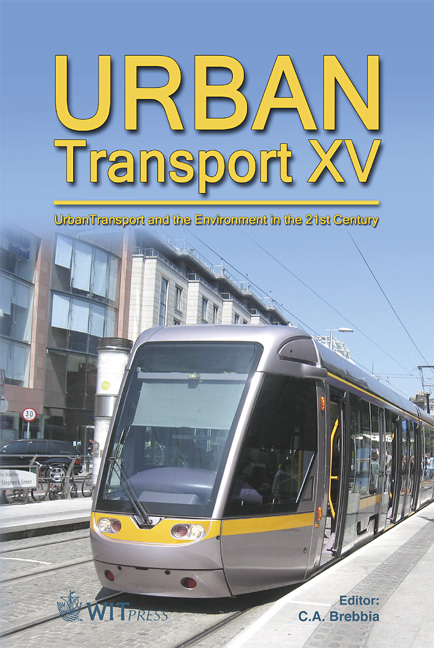Methodology To Quantify The Effect Of Policies And Measures In Emission Reductions From Road Transport
Price
Free (open access)
Transaction
Volume
107
Pages
10
Page Range
565 - 574
Published
2009
Size
345 kb
Paper DOI
10.2495/UT090501
Copyright
WIT Press
Author(s)
J. Lumbreras, A. Guijarro, J. M. López & E. Rodríguez
Abstract
Atmospheric emissions from road transport have increased all around the world since 1990 more rapidly than from other pollution sources. Moreover, they contribute more than 25% of the total emissions in the majority of European countries. This situation confirms the importance of road transport when complying with emission ceilings (e.g. the Kyoto Protocol and the National Emissions Ceilings Directive). The developed methodology illustrates the effect on transport emissions of the most influential variables and their relationships. Therefore, it would be a policy instrument to design emission reduction measures. Firstly, the influence of the main variables was studied: mileage or mobility (passengers or tonnes) per vehicle type (cars, buses, light duty vehicles, heavy duty vehicles, mopeds, and motorcycles); fuel used (diesel, petrol, biofuels, natural gas, and LPG); driving mode (urban, rural, and highway) and vehicle speed; technology used (Euro types, hybrid vehicles, and electric vehicles by power); vehicle characteristics (power, load factor, age, operational life, etc.). The second step consisted of defining several scenarios, changing the variables in order to analyze both the individual and combined effect of these on emissions (sensitivity analysis). These scenarios evaluate the effect of changes in the previous factors, according to realistic policies and measures (e.g. penetration of Euro 5 and 6, the increase of biofuel use, scrapping systems, etc.) The third step included the development of a holistic model to estimate emissions, which allows the quantification of the effect of both technical and non-technical measures. The model is called EmiTRANS and it estimates the emissions in a flexible and coherent way. It contributes to incorporating scientific data in the decision making process. Finally, this methodology has been successfully proven for the calculation of emission projections from road transport in Spain, up to 2020, under several scenarios. Keywords: road transport, emissions, methodology, policies and measures.
Keywords
road transport, emissions, methodology, policies and measures





